परिचय
Harsha Vardhana, known simply as Harsha, was one of the most illustrious rulers of early medieval India. Governing from 606 to 647 CE, Harsha united vast portions of North and East India in the aftermath of the Gupta Empire’s disintegration, reviving imperial unity and cultural vibrancy. His capital at Kannauj became the heart of a renaissance, attracting philosophers, poets, and Buddhist monks from across Asia. Harsha’s reign is remembered for administrative innovation, public welfare, literary achievement, and his pivotal role as a bridge between classical and medieval Indian civilization.
प्रारंभिक जीवन और प्रवेश
Born circa 590 CE into the Pushyabhuti Dynasty, Harsha was the younger son of Prabhakaravardhana, king of Thanesar (modern Haryana), and queen Yasomati. His early years unfolded against a backdrop of political turmoil:
- Family Tragedy and Ascendancy: The murder of his elder brother, Rajyavardhana, by King Shashanka of Gauda, and the abduction of his sister, Rajyashri, galvanized Harsha. At age 16, he united the thrones of Thanesar and Kannauj—a critical move that launched his ambitious drive for territorial reunification.
- Influence of Rajyashri: Rescuing his sister after her imprisonment and attempted suicide shaped Harsha’s worldview and cemented familial loyalty at the core of his rule.

Geographical Extent and Territorial Expansion
Harsha’s empire, though not as vast as that of the Guptas, extended impressively:
- Northern Unity: Harsha consolidated Punjab, Bengal, Odisha, Kashmir, Thaneswar, and Kannauj, dominating the entire Indo-Gangetic plain.
- Limits of Expansion: His campaigns in the Deccan were checked by the Chalukya king, Pulakeshin II, at the Narmada River, establishing this river as the southern boundary of his realm.
- Relations with Feudatories: Harsha ruled directly over central provinces while regional kings and feudatories acknowledged his overlordship, maintaining a cohesive and relatively stable polity.
Governance and Administration
Harsha’s administrative style blended centralized authority with pragmatic local governance:
- Administrative Hierarchy: The empire was organized into provinces (bhuktis), districts (visayas), and villages (gramas). Provincial officials acted under the king’s direct authority but allowed significant autonomy at the village level.
- Council of Ministers: Harsha personally led his government, aided by a council that included military leaders, revenue officials, and regional nobles.
- Law and Order: Notably, Harsha forbade capital punishment, emphasizing humane corrective measures over severe retribution—a policy praised by foreign visitors.
Economic Revival and Public Welfare
Harsha’s reign saw economic resurgence:
- Agriculture and Trade: Fertile river valleys, supported by newly repaired canals and roads, fueled agricultural surpluses. Trade—both inland and with Southeast Asia—flourished, facilitated by secure routes and plentiful markets.
- समाज कल्याण: Harsha championed extensive charity; he built hospitals, rest houses, and provided free medical care. Revenues supported public works and generous almsgiving, including quinquennial assemblies where he personally distributed wealth.
Patronage of Religion and Philosophy
Though personally a devotee of Mahayana Buddhism, Harsha embodied religious syncretism:
- Patron of All Faiths: He supported Brahmanical temples, Buddhist monasteries, and Jain institutions alike, epitomizing religious tolerance.
- Assemblies and Debates: Harsha hosted great religious assemblies at Prayag (Allahabad), promoting discussion among monks, Brahmins, and scholars.
- Nalanda University: The Buddhist monk Xuanzang (Hiuen Tsang), who visited India during Harsha’s reign, describes lavish royal patronage for Nalanda, then the most prestigious Buddhist university in the world.
Literary and Cultural Renaissance
Harsha was an accomplished writer and an active patron of the arts:
- Works of Harsha: He authored three famed Sanskrit plays: Nagananda, Ratnavali, और Priyadarsika, reflecting his literary prowess and cosmopolitan court life.
- Banabhatta and Court Culture: Banabhatta, his official biographer, composed the Harshacharita, a masterful prose chronicle depicting the era’s grandeur.
- Architecture and Art: The construction of monasteries, sculptures, and temples—some funded by Harsha personally—testifies to a court alive with artistic innovation.
Foreign Relations and Xuanzang’s Account
India under Harsha enjoyed international prestige:
- Diplomatic Missions: Harsha corresponded with the Tang dynasty in China, facilitating regular exchanges of embassies and gifts.
- Xuanzang’s Observations: The famous Chinese pilgrim provided firsthand records of life in Harsha’s India: a society marked by peace, ample food, charity to strangers, medical care, and learning centers.
Decline and Aftermath
Harsha died in 647 CE without an heir, leading to rapid fragmentation of his empire. Kannauj became contested, and North India entered an era of regional kingdoms. Yet Harsha’s reign lingered as a symbol of unity and enlightened governance until the advent of the Muslim dynasties centuries later.
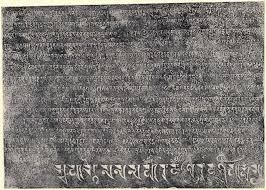
Interesting Facts
- Harsha’s quinquennial assemblies at Prayag attracted monks, Brahmins, and the poor from all over India, with vast riches distributed in elaborate ceremonies.
- Both Banabhatta and Xuanzang lavishly praised Harsha’s personal piety and funereal generosity; Xuanzang called him “kind to all creatures, and always bestowing charities.”
- Harsha banned the slaughter of animals in his empire, showcasing his Buddhist leanings.
- The absence of slavery and capital punishment was a remarkable hallmark of his social policies for the era.
निष्कर्ष
Harsha Vardhana’s reign (606–647 CE) represents a golden bridge between ancient and medieval India—a time when imperial order revived, culture and learning blossomed, and a humane ethos underpinned the exercise of power. His legacy as a philosopher-king, patron of all faiths, and unifier of North India endures in the annals of the subcontinent’s history as a beacon of enlightened rule and cultural renaissance.

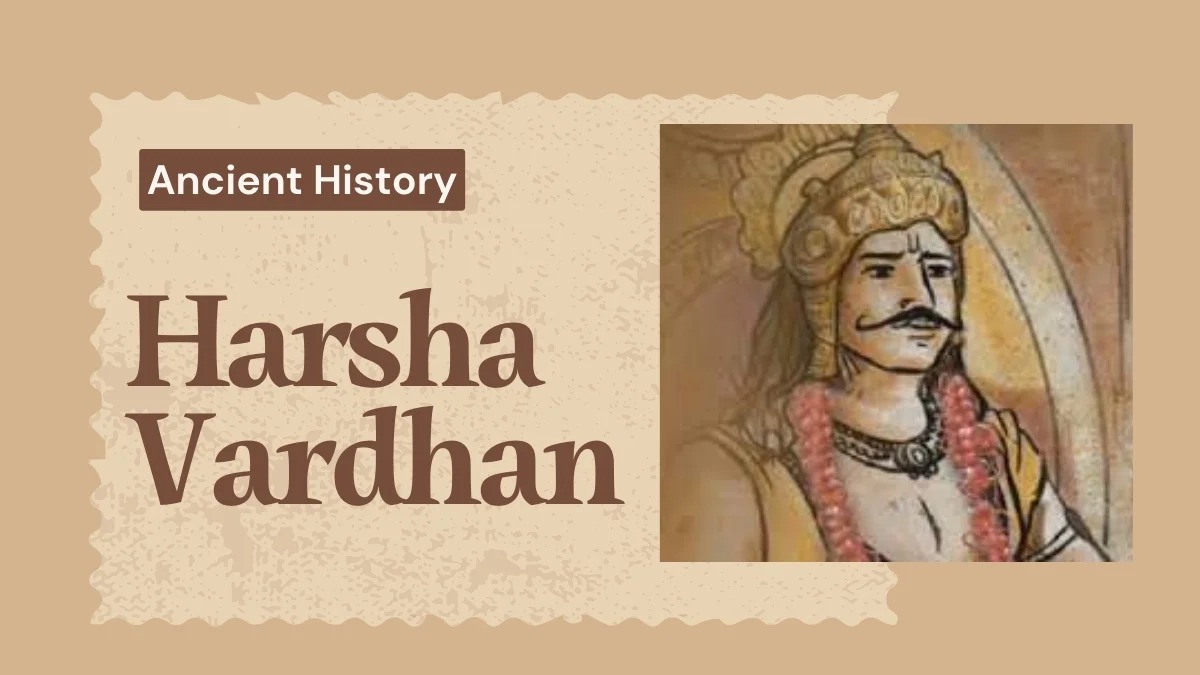
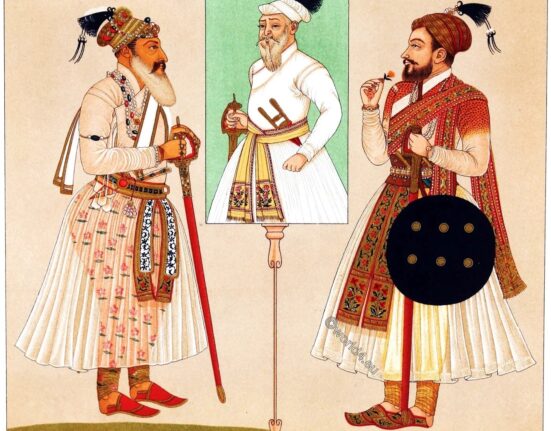
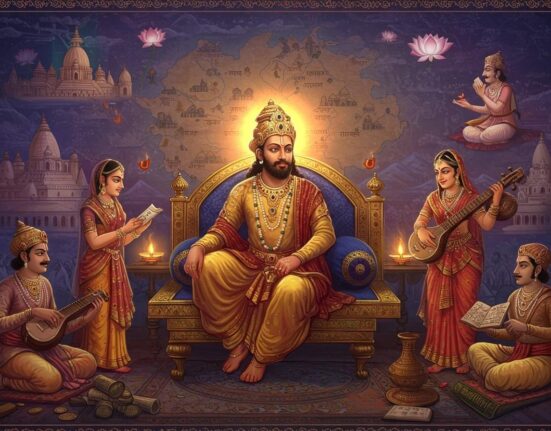

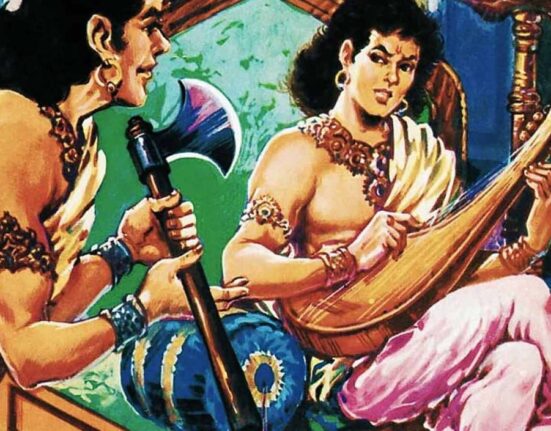

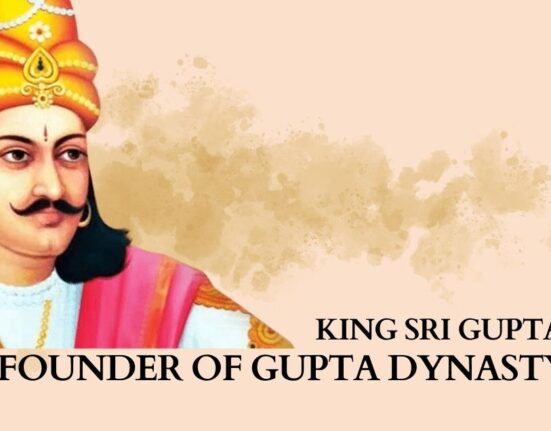
इस बारे में प्रतिक्रिया दें